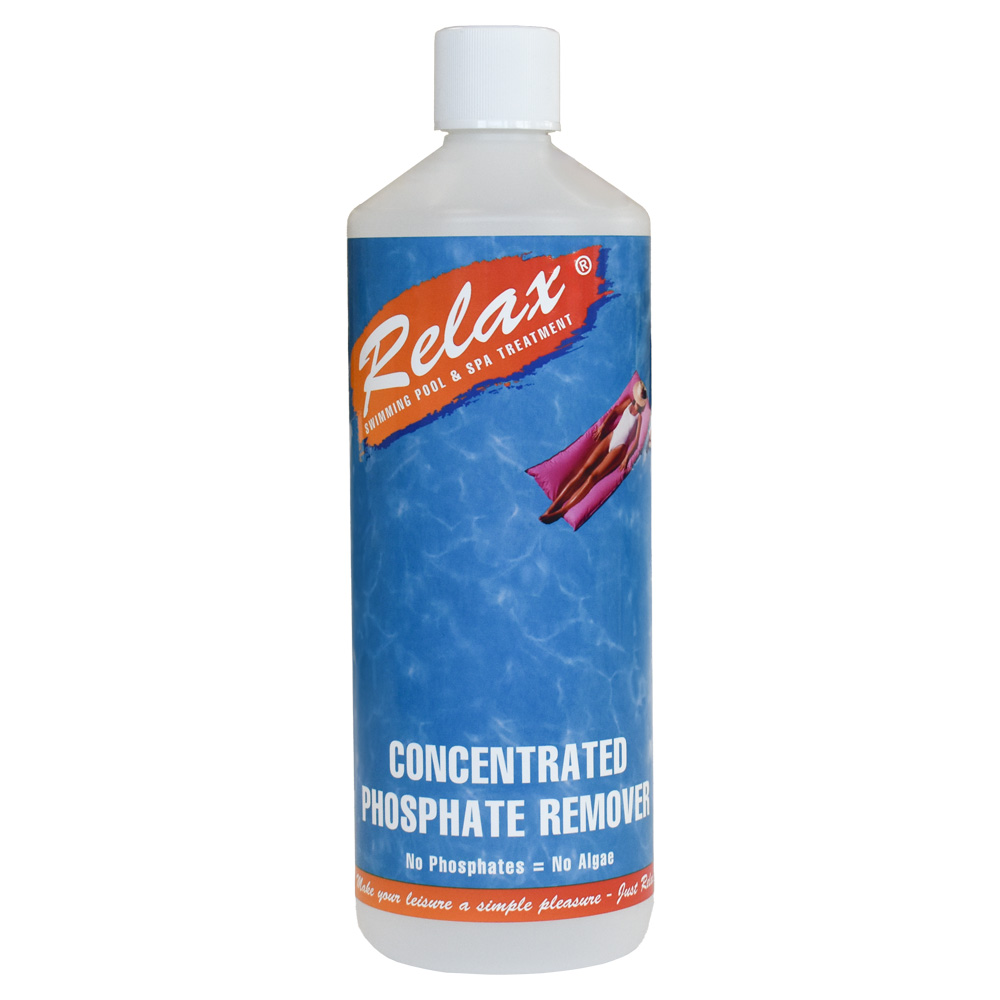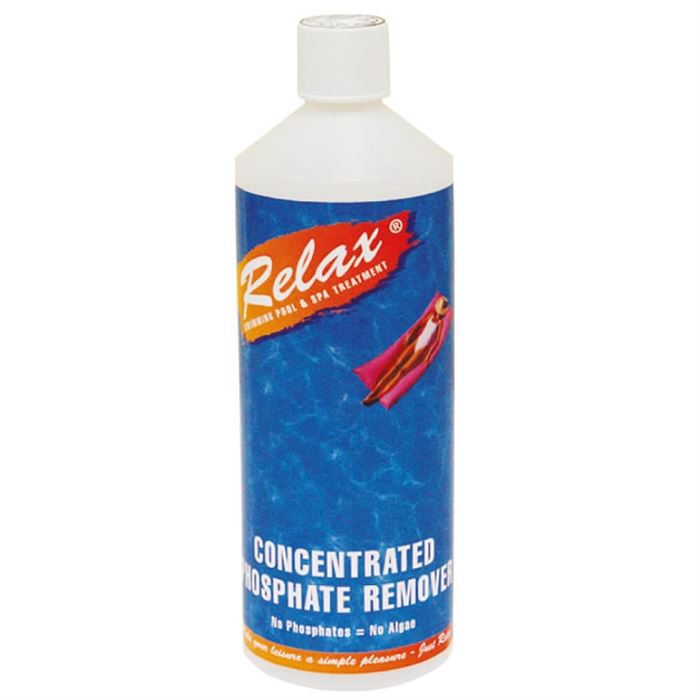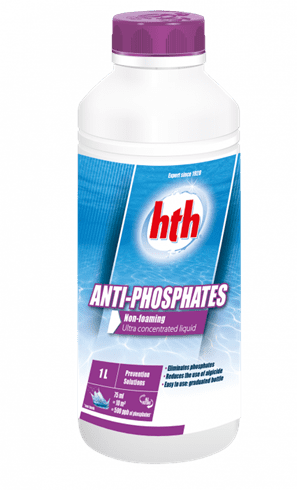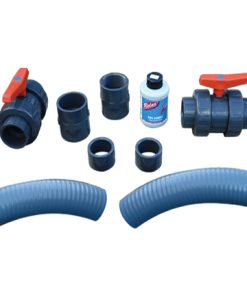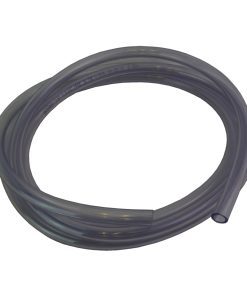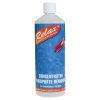When it comes to maintaining a sparkling clean and inviting pool, combating algae is a top priority for any pool owner. The 1 Litre Algaecide offers a powerful solution to keep algae at bay for up to half a season in your average-sized domestic pool. Say goodbye to green, murky water and hello to a pristine pool ready for endless enjoyment.
Understanding the root cause of algae growth is crucial in effectively eradicating this nuisance. Phosphates, present in all water sources, serve as a primary nutrient for algae. Organic waste and environmental contaminants contribute to elevated phosphate levels, creating an ideal breeding ground for algae. By eliminating this essential food source, the Algaecide disrupts the algae’s lifecycle, preventing its proliferation in your pool.
Algae, although harmless on its own, can quickly turn your pool into an unappealing sight. These microscopic single-cell plants thrive in water environments, causing discoloration and cloudiness that not only detracts from the aesthetic appeal of your pool but also poses potential safety hazards. Slippery pool surfaces and reduced visibility can compromise the overall swimming experience and even endanger swimmers in distress.
Managing nitrogen levels in your pool is another critical aspect of algae control. Bather contamination introduces nitrogen into the water, which can fuel algae growth if left unchecked. Utilizing shock treatments not only helps eliminate existing algae but also aids in releasing excess nitrogen as a gas, effectively purifying the water and creating an inhospitable environment for algae to thrive.
Phosphorus, a common pool contaminant, undergoes a transformation into orthophosphates, a preferred nutrient source for algae. By targeting and neutralizing phosphorus compounds, the Algaecide disrupts the algae’s access to essential nutrients, further enhancing its efficacy in preventing algae infestations.
To effectively combat algae infestations and maintain a pristine pool environment, a comprehensive approach is essential. The following steps outline a proactive strategy for eliminating algae and safeguarding your pool:
1. Shock dose your pool by elevating the free chlorine levels to above 10 parts per million for greenish water and up to 25 parts per million for obscured visibility. This intensive treatment should be conducted in the absence of bathers to maximize its effectiveness.
2. Thoroughly brush and remove algae from the pool structure, especially stubborn varieties like black and mustard algae that may require manual removal. Use a vacuum to clear out any residual algae debris, ensuring a thorough cleansing of your pool surfaces.
3. Introduce the Algaecide into your pool water to inhibit algae growth effectively. Formulated with copper chelate, this long-lasting algicide gradually releases copper into the water, maintaining a free copper level of 0.4 parts per million. Avoid excessive application to prevent copper deposition on metal surfaces or unwanted color changes.
With its potent formula and lasting protection, the 1 Litre Algaecide stands as a reliable ally in your battle against algae, ensuring a pristine and inviting pool environment for you and your loved ones to enjoy. Say goodbye to algae woes and embrace the beauty of crystal-clear waters with this essential pool maintenance solution.
Manufacturers description:
1 Litre Will Eradicate Algae For Half A Season In An Average Sized Domestic Pool.
Water always contains phosphates. The quantity is determined by the quality of the water and the environmental contamination. Virtually all organic waste will increase phosphate levels. Phosphate is a nutrient for algae and by removing this food source algae cannot survive.
Algicides are a vital ingredient to control the nuisance of algae in swimming pool and spa water.
Algae are microscopic single cell plants. They exist in most water, from fish tanks to reservoirs. Whilst not directly harmful, they are undesirable in swimming pools as they discolour the water- usually green, which is most uninviting to the swimmer. Eventually the water can become opaque and dangerous in that a bather in difficulty may not be seen. The pool structure will also be slippery if algae are attached to it.
Nitrogen can be introduced into the water by bather contamination. Shock treatment, itself a good method of killing algae ensures that some nitrogen is released as a gas rather than staying in the water as an assortment of nitrogen compounds.
Phosphorus can is introduced into the water in a variety of ways. Phosphorus will eventually revert to orthophosphates which is what algae really likes.
HOW TO ELIMINATE ALGAE
- Shock dose by raising the free chlorine level to above 10 parts per million if the water is a greenish colour and up to 25 parts per million if you can’t see the bottom. This treatment should be done whilst bathers are prevented from entering the water.
- Brush algae from the structure of the pool. The more virulent types such as black and mustard varieties may need scraping off. Vacuum and remove these residues by the pool filtration.
- Introduce algicide into the water. This will most likely be in the form of copper chelate which slowly releases copper into the water, hence the term “longlife algicide”. Aim for an intial free copper level of 0.8 p.p.m and maintain at 0.4 parts per million. Don’t overdo it, otherwise copper may start to deposit on metal surfaces and it may turn your hair blue! Or use the alternative non-copper type.


